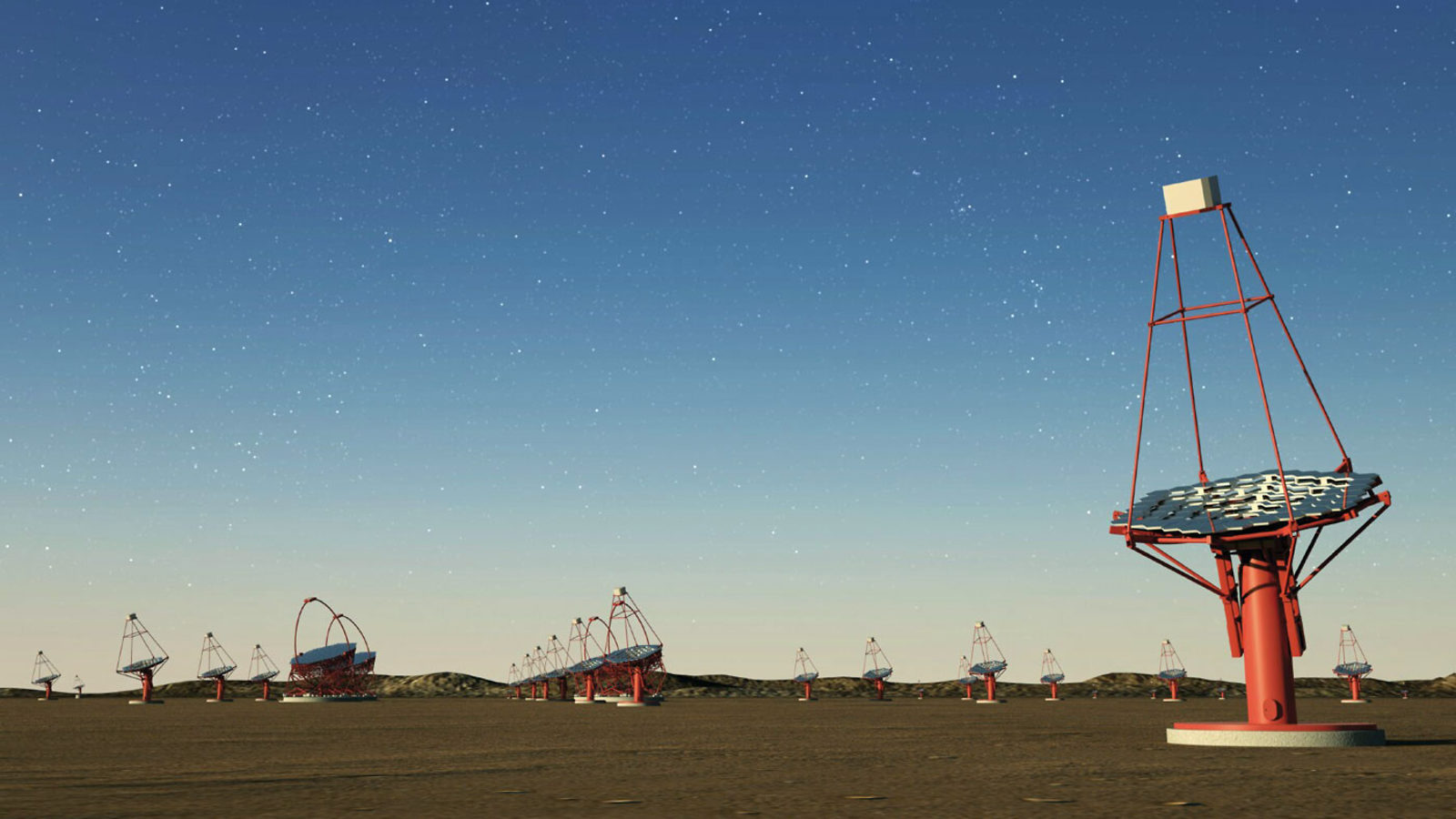Somewhere in the Southern Hemisphere, about 100 state-of-the-art telescopes will dot the otherwise empty landscape for half a kilometer in every direction. Meanwhile, in the Northern Hemisphere, a swath of land a little over a third the size will house about 20 additional telescopes, every one of them pointing toward the heavens each night for a full-sky view of the most energetic—and enigmatic—processes in the universe.
This is the plan for the Cherenkov Telescope Array Observatory, the world’s largest and most sensitive gamma-ray detector. The construction of the first of the two arrays is scheduled to begin in 2016, with the observatory becoming fully operational by 2020. At that point, CTA’s telescopes will observe gamma rays produced in some of the universe’s most violent events—everything from supernovas to supermassive black holes.
Yet where exactly the telescopes will be built remains to be seen.
Scientists representing the 29-country CTA consortium met last week to discuss the next steps toward narrowing down potential sites in the Northern Hemisphere: two in the United States (both in Arizona) and two others in Mexico and the Canary Islands. Although details from that meeting remain confidential, the CTA resource board is expected to begin negotiations with the potential host countries within the next few months. That will be the final step before the board makes its decision, says Rene Ong, co-spokesperson of CTA and a professor of physics and astronomy at UCLA.
“Whichever site it goes to, it will be very important in that country,” Ong says. “It’s a major facility, and it will bring with it a huge amount of intellectual capital.”
Site selection for the Southern Hemisphere is a bit further along. Last April, the CTA resource board narrowed down that list to two potential sites: one in Southern Namibia and one in Northern Chile. The board is now in the process of choosing between the sites based on factors including weather, operating costs, existing infrastructure like roads and utilities, and host country contributions. A final decision is expected soon.
“The consortium went through an exhaustive 3-year process of examining the potential sites, and all of the sites now being considered will deliver on the science,” says CTA Project Scientist Jim Hinton, a professor of physics and astronomy at the University of Leicester. “We’re happy that we have so many really good potential sites. If we reach an impasse with one, we can still keep moving forward with the others.”
Scientists do not completely understand how high-energy gamma rays are created. Previous studies suggest that they stream from jets of plasma pouring out of enormous black holes, supernovae and other extreme environments, but the processes that create the rays—as well as the harsh environments where they are produced—remain mysterious.
To reach its goal of better understanding high-energy gamma rays, CTA needs to select two sites—one in the Northern Hemisphere and one in the Southern Hemisphere—to see the widest possible swath of sky. In addition, the view from the two sites will overlap just enough to allow experimenters to better calibrate their instruments, reducing error and ensuring accurate measurements.
With 10 times the sensitivity of previous experiments, CTA will fill in the many blank regions in our gamma-ray map of the universe. Gamma-rays with energies up to 100 gigaelectronvolts have already been mapped by the Fermi Gamma-ray Space Telescope and others; CTA will cover energies up to 100,000 gigaelectronvolts. It will survey more of the sky than any previous such experiment and be significantly better at determining the origin of each gamma ray, allowing researchers to finally understand the astrophysical processes that produce these energetic rays.
CTA may also offer insight into dark matter. If a dark matter particle were to naturally decay or interact with its antimatter partner to release a flash of energy, the telescope array could theoretically detect that flash. In fact, CTA is one of very few instruments that could see such flashes with energies above 100 gigaelectronvolts.
“I’m optimistic that we’ll see something totally new and unexpected,” Ong says. “Obviously I can’t tell you what it will be—otherwise it wouldn’t be unexpected—but history tells us that when you make a big step forward in capability, you tend to see something totally new. And that’s just what we’re doing here.”




